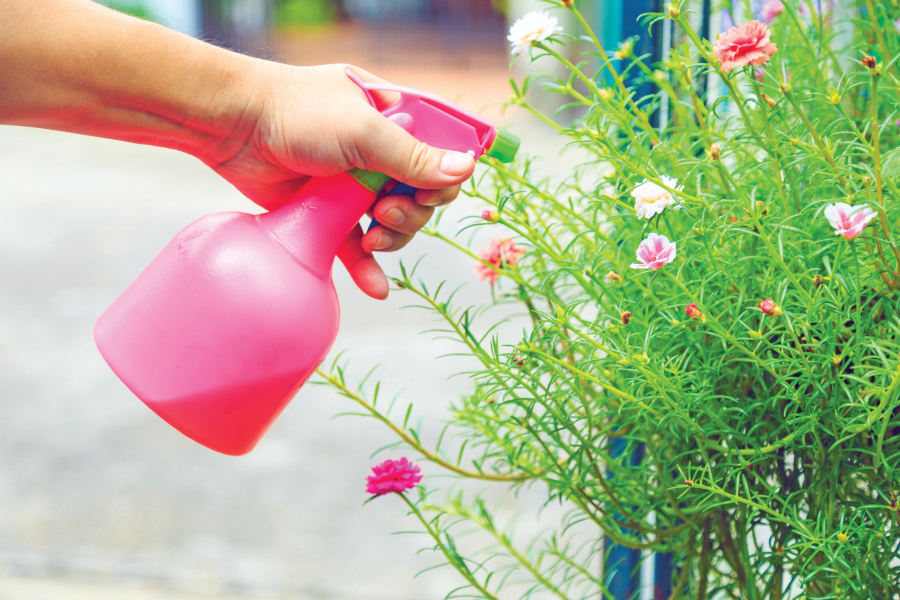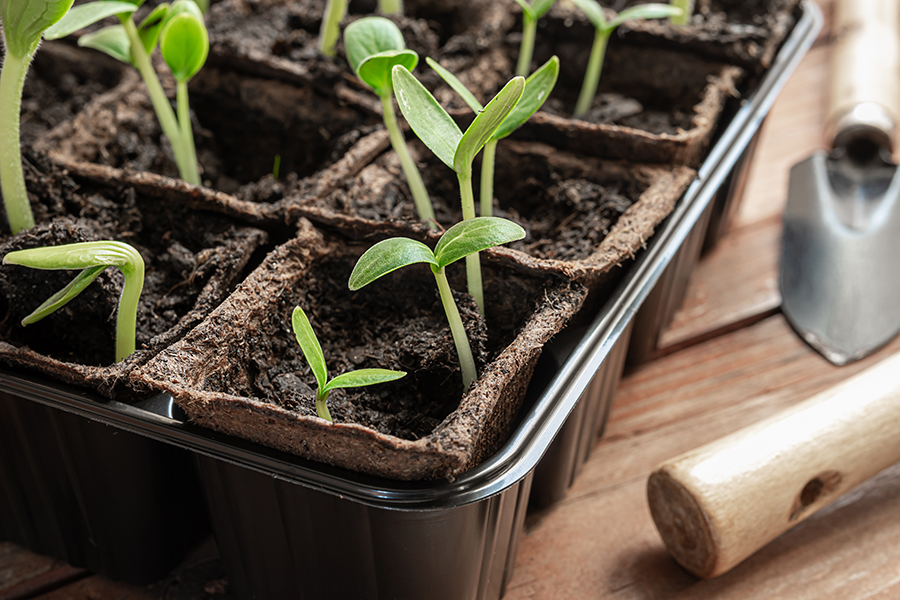10 Unusual Gardening Hacks That Actually Work
Looking for quick, simple and affordable gardening hacks to solve a few common problems this growing season? We’ve gathered up 10 of our favorite unusual gardening tips that actually work for anyone wanting to get creative with do-it-yourself hacks in the garden this year.

1. Fertilize Your Plants With Coffee Grounds
We all love a good cup of coffee, right? But throwing away your coffee grounds or ditching the coffee pot liners will soon be things of the past. Coffee grounds are a wonderful garden fertilizer, rich in phosphorus, potassium, nitrogen and magnesium. They can also serve as pest control against slugs and snails. Some even say they boast natural anti-fungal properties, which is a huge win for anyone hoping to grow healthy produce.
See more: 5 Foods You Can Use as Plant Fertilizer
2. Use Cayenne Pepper to Ward Off Pests
Anyone with a garden knows pests can devastate anything and everything in no time at all. Rather than reaching for the latest and greatest chemical invention at the hardware store, consider using a little cayenne pepper to keep those pesky critters away. Cayenne won’t harm your plants, but it will keep unwanted animals and bugs from munching on all your hard work. All you need to do is sprinkle a quarter cup throughout your garden every few days and you’ll begin to see healthier plants without chewed-up leaves and half-eaten fruit.
3. “Plant” Plastic Forks to Deter Critters
Before you toss that box of unused plastic forks from last year’s holiday gathering, consider using them in your garden. Placing forks in the soil around your plants will discourage animals like raccoons, cats, squirrels and deer from wandering into the garden and helping themselves to your crops.

4. Make a DIY Weed Killer With Vinegar
Looking for an alternative to commercial weed killer? Vinegar is a quick and easy way to rid yourself of those garden invaders trying to choke out your crops. If you can’t manage the weed problem with small, frequent weed pulling sessions, you can create your own homemade weed killer concoction with 1 gallon of white vinegar, 1 cup of table salt and 1 tablespoon of dishwashing soap. Mix them all together, pour the solution into a spray bottle and get after those weeds.
5. Destroy Fungus With Cinnamon
You probably have a little cinnamon tucked in the cupboards for baking cookies, cakes and other baked treats. But did you know you can use it in the garden, too? In addition to helping root cuttings and deterring (some) pests, cinnamon also has anti-fungal properties that work in a pinch for preventing damping off disease in young seedlings. Some say you can even sprinkle it in potted plants that have started to grow mushrooms from overwatering.
6. Boost Garden Nutrients With Banana Peel Juice
Bananas are full of nutrients that plants love, like potassium, potash, calcium and sulfur. Throw your unwanted banana peels in a blender with a little bit of water, blend the mixture up and pour it around your roses and tomatoes to give them a little nutrient boost.

7. Strengthen Seedlings With Chamomile Tea
Similar to cinnamon, chamomile is known for its anti-fungal properties. Steeping a little chamomile tea and using it on your seedlings is another good option, or alternative to cinnamon, for preventing damping off disease that tends to crop up among new seedlings. Simply spray a little of the tea on your seedlings after transplanting them into the garden.
8. Save Milk Jugs for Sheltering Plants
If you have room to save your empty milk jugs, now is the time to start stocking up. Milk jugs are a creative container for overwintering plants as well as protecting young ones during spring cold snaps. You can either cut off the top and place it upside down over your seedlings to shelter them from the cold and wind, or you can fill several jugs with warm water and place them in a circle around each plant to provide a little extra heat.
See more: Eco-Friendly Gardening Tips
9. Water Gardenias With Soda
This one sounds way out there, doesn’t it? But using soda will provide a little extra acidity in the soil, which gardenia blooms love. Don’t overdo it with this garden hack. A little bit of this sweet treat goes a long way in encouraging more lustrous blooms. Give them a little drink at the beginning of the season and only repeat once more for the best results.
10. Protect Your Nails With Soap
Every gardener loves a good dirt manicure now and again. But if you’ve grown weary of scrubbing the skin off your fingertips at night in a feeble attempt to get the soil out from under your nails, we have good news. All you need to do is rub your nails over a bar of soap before you get down in the dirt. It creates a convenient barrier against dirt that can be washed right off when you come back inside.
5 Comments
Join the discussion and tell us your opinion.




Placing forks in the soil around your plants will NOT discourage animals like raccoons, cats, squirrels, and deer from wandering into the garden and helping themselves to your crops. Putting plastic utensils in the garden for anything other than labeling purposes is a waste of a good eating utensil. It’s best to use those unused plastic forks from last year’s holiday gathering, family event, or special occasion for their original purpose – eating a meal.
So true
[…] water, a popular gardening hack, has spread on social media. It is said to improve a plant’s photosynthesis while also […]
I love the plastic fork idea! Really works. I also use. Moth balls in flower beds to keep critters out.
[…] Sabor de granja menciona que solo necesitas un poco para ayudar a que tu planta florezca bien, regando una vez al inicio de la temporada y tal vez una vez más antes de florecer. La otra razón por la que a las gardenias les encantan los refrescos es por la composición mineral de esta bebida gaseosa, que incluye carbono, sodio, hidrógeno y oxígeno, por mencionar algunos. Aunque las plantas pueden obtener estos minerales del suelo, regarlos con un líquido con ellos facilita que la planta los absorba. […]